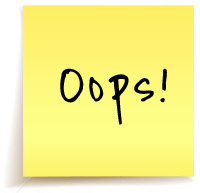Tips for reading aloud
Reading aloud to your children helps to enrich their language, feed their imaginations and develop their literacy skills. And, when children enjoy being read to, it helps turn them into regular readers. So, the trick is make reading times something your children look forward to! Here are some ideas:

Reading aloud to your children helps to enrich their language, feed their imaginations and develop their literacy skills. And, when children enjoy being read to, it helps turn them into regular readers. So, the trick is make reading times something your children look forward to! Here are some ideas:
- Find a quiet, comfortable place to read. Turn off any computers, TVs and radios! Sit close to each other so that you can both easily see the pictures and words on the page.
- Try to select books that you enjoy reading but also ask your child to choose a book for you to read together.
- Begin by reading the title of the story on the cover as well as the names of the author and illustrator. (This helps children realise that ‘real’ people create storybook!) Spend some time looking at the cover picture together and noticing interesting details.
- Reading aloud is like a stage performance! Puts lots of expression in your voice and alter the volume to suit what you are reading about. For example, use a soft, quiet voice for a sad part of a story or whisper when a character is telling a secret. Use a loud, booming voice for the words of a giant or in a passage that describes a storm.
- As you read each page, allow time for your child to look at the pictures and comment on things he or she notices.
- Develop your child’s prediction skills by asking ‘What do you think is going to happen next?’ at different moments in the story.
- After you have finished reading, invite your child to share his or her opinions about one or more the characters, their actions and/or events in the story. For example, ‘Why do you think Goldilocks decided to go into the bears’ house even though they weren’t at home? Would you have done that? Why/why not?’.
- And, most importantly, try not to be a ‘teacher’ as you read to your child. Just relax and enjoy exploring the story together.


 Oops! We can’t find the article you are looking for. Please try a different Subject, Grade or Title.
Oops! We can’t find the article you are looking for. Please try a different Subject, Grade or Title.